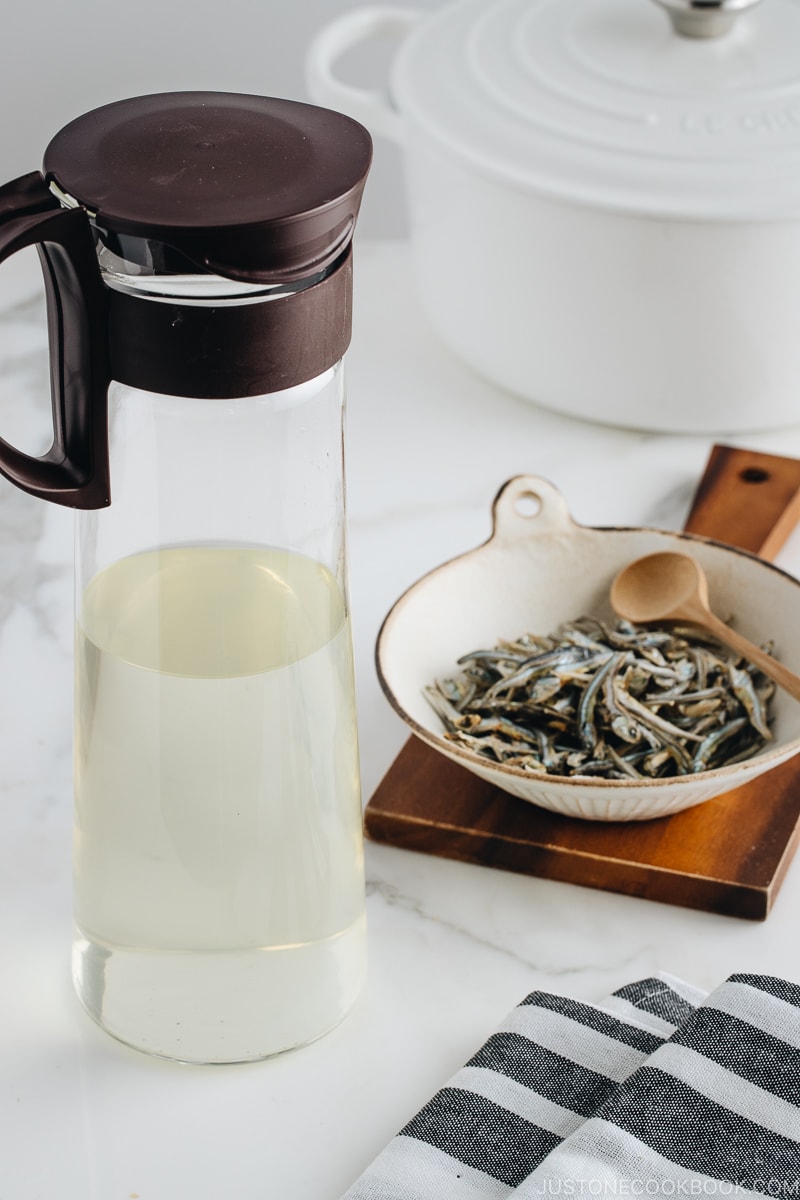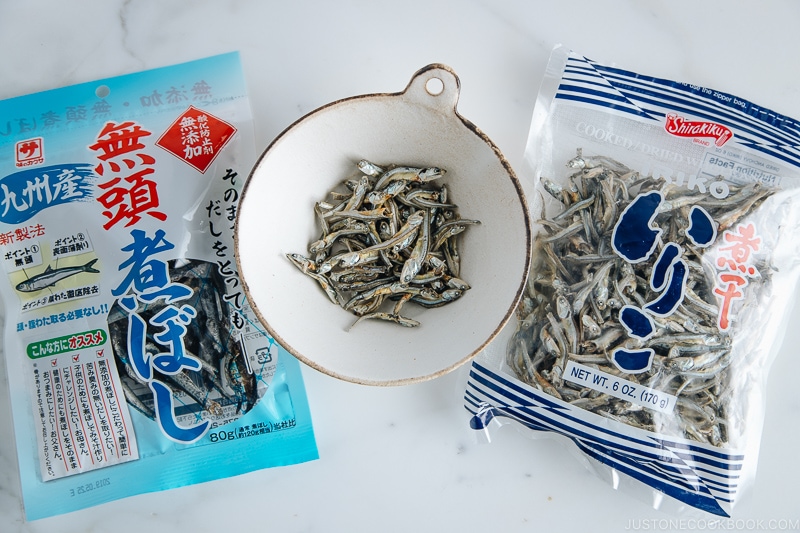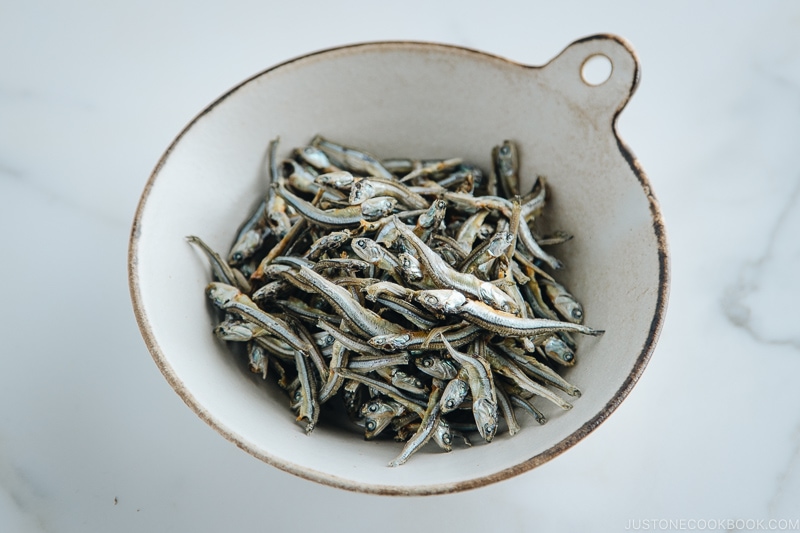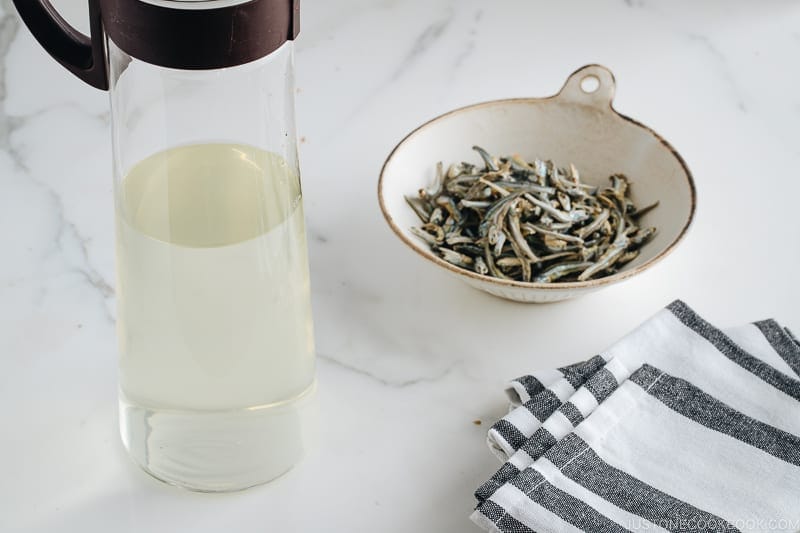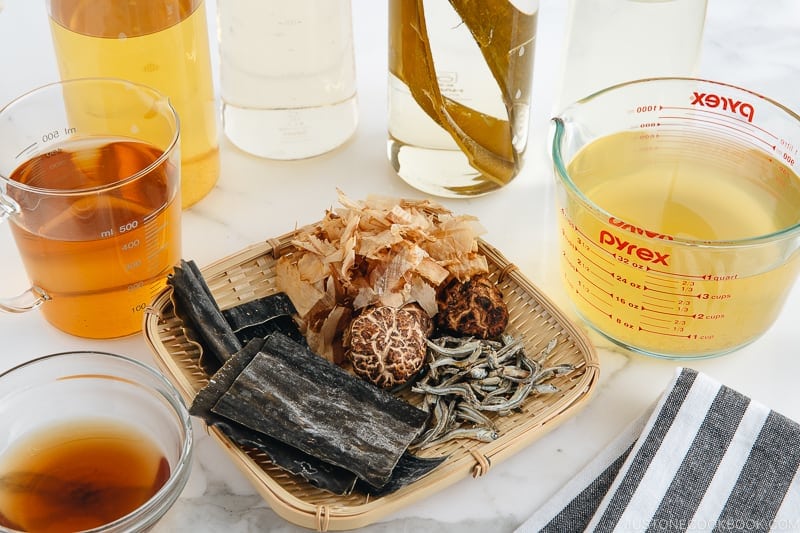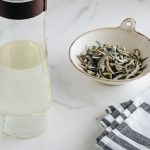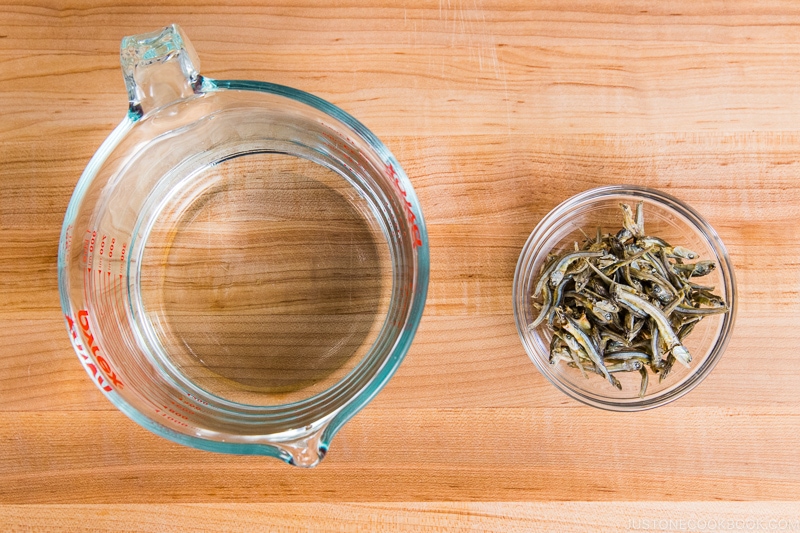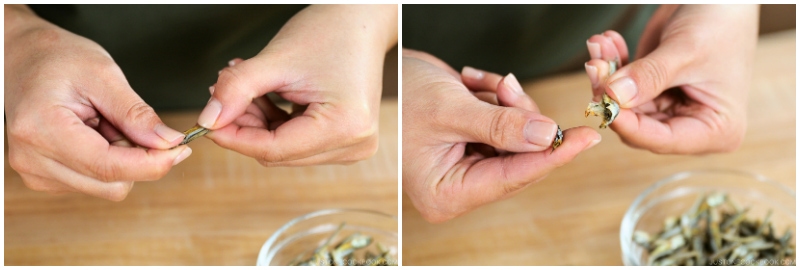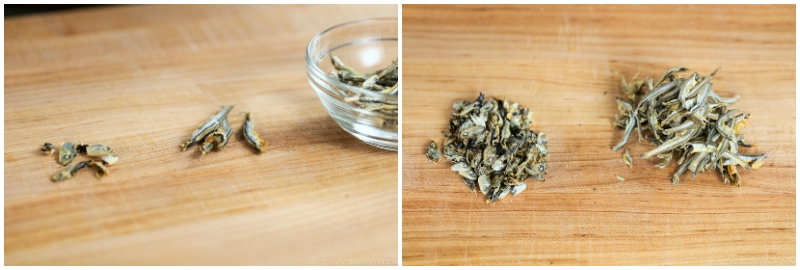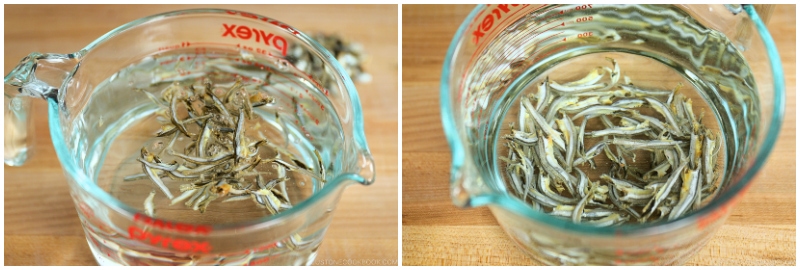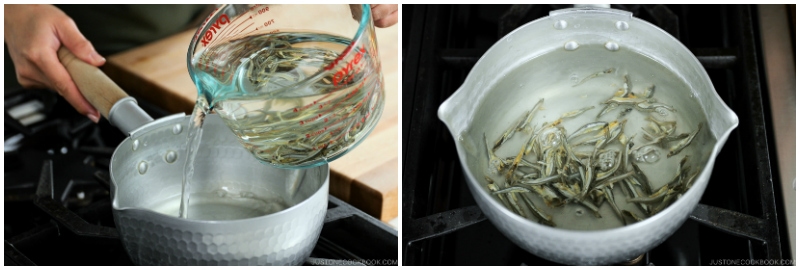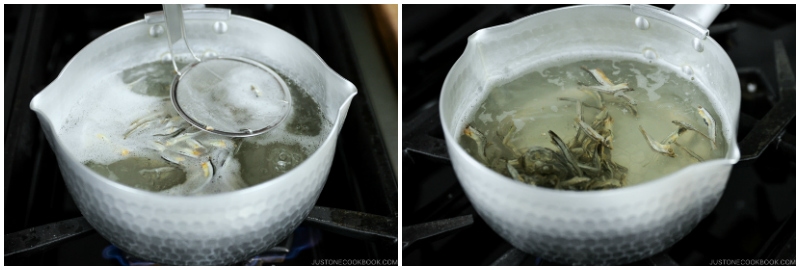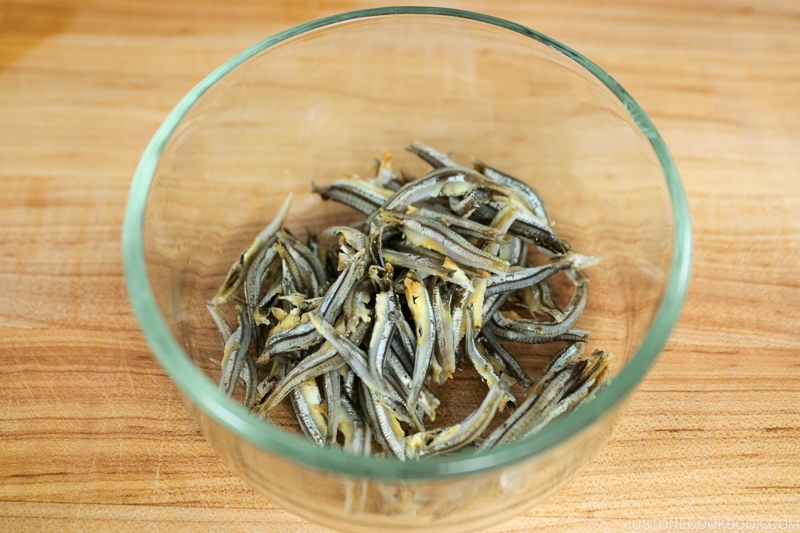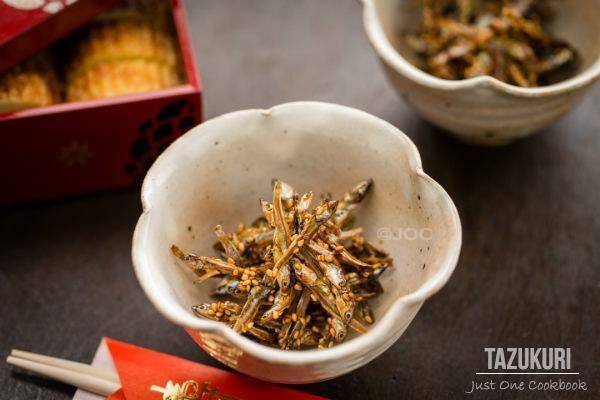Making dashi (Japanese soup stock) is an all-important step in Japanese cooking to create authentic flavor. Today I want to share my recipe for how to make a Japanese anchovy stock called Iriko Dashi (いりこだし) or Niboshi Dashi (煮干しだし), commonly used in miso soup and many other hot pots, noodle soup, and simmered dishes.
What is Iriko Dashi?
Iriko dashi (いりこだし) or niboshi dashi (煮干しだし) is the Japanese soup stock made from iriko (いりこ) / niboshi (煮干し), dried baby sardines or anchovies. Iriko (いりこ) / niboshi (煮干し) come in sizes between 1.5 to 3 inches (3.75–7.5 cm) long and are often sold in plastic bags at Japanese and Asian grocery stores. They have been boiled in salt water once and then dried. The smaller baby anchovies have a milder flavor, and the larger ones have more umami components. They are high in calcium and are a great source of omega-3 fatty acids, protein, and minerals. In Japan, we enjoy these dried small fish as a snack or use them to make soup stock. They are also a common ingredient in Korean, Chinese, and Southeast Asian cuisines where they are used in many different ways.
Iriko vs Niboshi: Are They the Same Thing?
Now, I have been using both iriko and niboshi throughout the post when referencing the dried baby anchovies. Not to confuse you, they are actually the same thing. The Japanese have a knack for naming produce and vegetables, so you can find different names used in different regions of Japan.
Ingredients You’ll Need
You just need two ingredients to make iriko dashi!
iriko/niboshi (boiled and dried anchovies) water
How to Make Iriko Dashi
What Dishes to Make with Iriko Dashi
Iriko dashi is a very common stock choice to make miso soup because dried iriko are more affordable than katsuobushi (dried bonito fakes) or kombu (dried kelp). Since the Japanese drink miso soup almost every day, it makes sense to use iriko dashi. Its briny and pronounced flavor also complements the bold miso, resulting in a more complex-tasting soup. You can use iriko dashi broth in the following Japanese food:
miso soup simmered dishes with soybeans, vegetables, seaweed, mushrooms udon noodle soup strongly-flavored dishes good to mix with kombu dashi
Anchovy stock is also a basic stock for Korean cuisine, and the process of making the stock is very similar to the one for Japanese cuisine. For those who cannot find kombu or katsuobushi, you can try finding these dried baby anchovies/sardines from Korean grocery stores to make this iriko dashi.
The Ultimate Dashi Guide
Dashi plays an important role as a flavor enhancer in Japanese cooking, so you don’t need to season the food with too much salt, fat, and sugar. Rich in minerals and other vitamins, dashi is considered a healthy ingredient in our daily diet. Wish to learn more about Japanese cooking? Sign up for our free newsletter to receive cooking tips & recipe updates! And stay in touch with me on Facebook, Pinterest, YouTube, and Instagram. If you are new to different types of dashi, check out my Ultimate Dashi Guide. Editor’s Note: The post was originally published in March 2014. New images and content have been added to the post in April 2019.
